#phillip k. dick
Explore tagged Tumblr posts
Photo

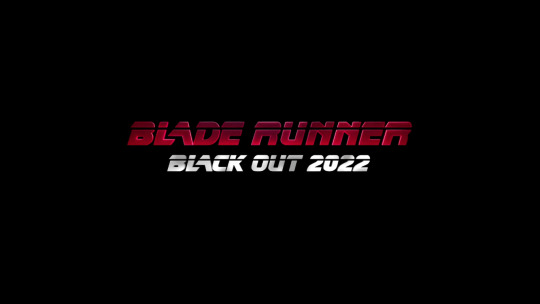
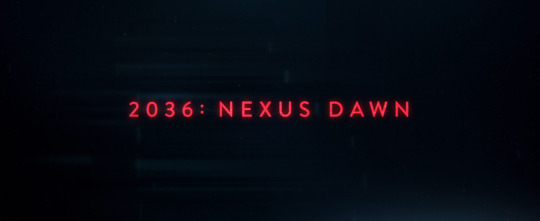
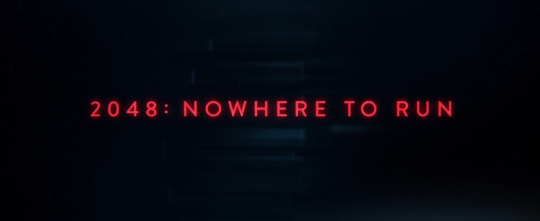

"Blade Runner" (1982) Directed by Ridley Scott (Action/Sci-Fi/Thriller) . . "Blade Runner: Black Out 2022" (2017) Directed by Shin'ichirô Watanabe (Anime/Sci-Fi/Short) . . "Blade Runner 2036: Nexus Dawn" (2017) Directed by Luke Scott (Sci-Fi/Thriller/Short) . . "Blade Runner 2048: Nowhere To Run" (2017) Directed by Luke Scott (Action/Sci-Fi/Short) . . "Blade Runner 2049" (2017) Directed by Denis Villeneuve (Action/Mystery/Sci-Fi)
#blade runner#blade runner 2049#cyberpunk#ridley scott#shin'ichiro watanabe#luke scott#denis villeneuve#harrison ford#phillip k. dick#ryan gosling#rutger hauer#sci-fi#film#cinema#cinema title cards#2017#1982#2022#2036#2048#Dave Bautista#jared leto
122 notes
·
View notes
Text

Excerpt from Lost: Life & Ethics in The Age of AI, Chapter 50
#phillip k. dick#ethics#philosophy#writers on tumblr#writerscommunity#writlbr#quote#quotes#love#sociology#psychology#ideologies#discernment
4 notes
·
View notes
Text
50. Navigating the Treacherous Waters of Daily Moral Inquiry: The Duality of Pain and Hope
“Pain and hope are the two mutually exclusive primary realities that unify and become the ultimate, new synthesis for our age; we must feel both to experience this new synthesis that is serving, simplicity, and sharing; pain without hope is miserable, but hope without pain is empty and futile.” — Phillip K. Dick
In the often tumultuous landscape of modern life, where both moral and ethical inquiries are often drowned out by the chaos of self-interest and moral relativism, we stand at the precipice of a profound dichotomy: pain and hope. It is not enough to merely acknowledge their existence; we must grapple with their interdependence. To ponder the nature of morals and ethics without these dualities is akin to setting sail on the vast ocean without a compass. As Philip K. Dick astutely points out, pain and hope are inextricably linked, each illuminating the path toward a new synthesis—yet, how often do we shy away from the discomfort of pain? It beckons us to confront the darker aspects of our nature, revealing the latent psychopathy that festers within.
One might ask: how does this duality manifest within our familial and interpersonal relationships? The intricate bonds we carry are all too often marred by silenced grievances and unspoken resentments. Pain sits unacknowledged in the corners of our homes, while hope, draped in a veneer of politesse, hangs hollow in the air. Thus, the ethical terrain we traverse becomes riddled with paradoxes that are both maddening and illuminating. We must delve deep, unearthing our discomforts to harness them—not as weights, but as catalysts for profound transformation.
Nevertheless, the walls we erect to shield ourselves from pain turn into prisons. They distort our perceptions, blinding us to the hope that lies beyond. This dissonance breeds an ethical and moralistic malaise, where actions are dictated by an accumulation of grievances rather than an authentic alignment with values. We must acknowledge the complexities of our internal landscape, for it is only by embracing both our pain and our hope that we can navigate the treacherous waters of moral inquiry together.
The Illusory Safety of Secular Ideologies
In a world awash with secular ideologies, we find ourselves embroiled in a false sense of security. The comfort these ideologies offer is deceptive; they often lull us into complacency, blinding us to the profound ethical implications of blind allegiance. What happens when we accept political lies sans scrutiny? We become unwitting participants in a grand charade, one that erodes our capacity for critical thought and real ethical and moral discernment.
The implications for family dynamics are staggering. As we engage in online discourses, we risk projecting our learned psychopathy—those maladaptive patterns of behavior honed in stagnant ideological echo chambers—onto our loved ones. These dynamics bleed into our interpersonal relationships, where the promise of hope becomes suffocated by the weight of unaddressed pain. How can we really cultivate sincere connections when our engagement is filtered through the lens of ideological purity?
This existential threat demands our attention, because it undermines the foundational principles of empathy and understanding. The irony lies in our pursuit of safety through ideology, which ultimately fosters an environment ripe for conflict. In the end, we find ourselves devoid of meaningful connections—a byproduct of an insidious cycle where pain is ignored and hope is weaponized against us.
Emotional Intensity: Unpacking Psychological Grievances
Buried beneath our façade of civility lies a torrent of psychological grievances that shape our personal stances. The exploration of these hidden emotions is imperative if we desire to transcend the cyclical nature of pain and hope. We should embrace the intensity of our emotions rather than sweep them under the rug. After all, it is within the cauldron of emotional upheaval that true transformative change can be forged.
When confronted with various moral dilemmas, the first instinct may be to recoil—to fortify our barriers against the potential onslaught of pain. Yet, in doing so, we miss the opportunity to deeply connect with ourselves and others. This psychological defense mechanism often serves to exacerbate the emotional divide that permeates both familial and societal relationships. Our anger, neuroses, and insecurities become indistinguishable from our moral framework, dulling our ethical acuity in the outside world.
More importantly, the incessant dialogue of our grievances can no longer be relegated to mere whispers. As we seek the buoyancy of hope, we must scrutinize the psychological undercurrents shaping our engagement with ethics. This involves an unflinching examination of our prejudices, biases, and unchecked desires. Our moral landscape is a reflection of our internal struggles, demanding a reckoning with the shadows we so desperately wish to evade.
The Illusion of Altruism: Self-Serving Defenses
In the realms of family and social interaction, the notion of altruism often masks a deeper, more uncomfortable truth: our acts of kindness may serve as self-serving defenses against confronting our own emotional inadequacies. Herein lies a paradox that demands intellectual scrutiny. How do we reconcile our desire to project generosity with the underlying motivations grounded in self-preservation? The ethical framework we construct is often a mirage—a cleverly disguised attempt to sanitize our guilt and existential despair.
As we traverse this treacherous terrain, we must ask ourselves: are our actions genuinely altruistic, or are they merely vessels for our unaddressed pain? The apathy that sometimes permeates our familial ties can be traced back to this disquieting reality. We cannot afford to turn a blind eye to the relationships made transactional in our quest for moral superiority. Such dynamics dilute the very essence of hope, rendering it a mere facade behind which our fears persist.
Thus, we arrive at a critical juncture: to embody true ethical substance, we must dismantle the barriers shielding us from our own motivations. This involves a willingness to engage in candid self-reflection, an endeavor that may inspire visceral disgust at the depths of our self-deceit. Yet, within this discomfort lies the potential for liberation—an opportunity to forge deeper connections that arise not from the shadows of pain, but from the light of authentic communication.
The Ethical Quandary: Peeling Back the Layers on Digital Interaction
Now more than ever, we find ourselves immersed in digital landscapes that shape our ethics and interpersonal engagements. The multiplicity of online platforms can strain familial ties and skew ethical judgments, often distorting the authenticity of our interactions. The anonymity afforded by the digital realm often emboldens the expression of our latent psychopathy—a behavior that spills over from the virtual to the real world, wreaking havoc on our interpersonal relationships.
When cloaked by a screen, we can inhabit our biases without fear of immediate reprisal or accountability. Our moral compasses become tarnished as we may indulge in digital tribalism, forsaking the principles that should govern our familial and interpersonal dynamics. Herein lies the cry for authenticity: when faced with a barrage of information and ideological conflict, how do we discern the truth? More importantly, how do we engage constructively with those we hold dear amid a backdrop of online dissent?
The challenge presents itself clearly: while we navigate our ethical inquiries, we must also confront the implications of our online personas. They ought not become an extension of our pain but rather a platform for the expression of hope. Our digital interactions should be a conduit for exploring the intricacies of morality—transforming the overwhelming barrage of views into a rarefied sanctuary for ethical discourse.
Conclusion: Embracing Ethical Nuances in All Moral Dialogue
As we journey through this maze of ethical framework, it is essential to recognize that the complexities of modern secular life, family dynamics, and interpersonal relationships demand an unwavering commitment to growth. We must embrace this multifaceted landscape, fully aware of the challenges it poses, while remaining resilient in our pursuit of hope.
The key lies in fostering environments where open dialogue can flourish—where pain and hope coexist and inform one another. By validating our emotional struggles and framing them within a broader moral context, we invite transformation into our lives. We must cultivate a mindset that views ethical inquiry not as a burden but as an opportunity for evolution—one that deepens our connections with ourselves and those around us.
As we navigate this intricate terrain, we stand at an extraordinary juncture. By embracing the dualities of hope and pain, we can challenge the status quo, inciting a wave of transformative change. Rather than succumbing to the inertia of ignorance or complacency, let us be the architects of a future where ethical inquiry serves as a beacon of hope—illuminating the darkest corners of our pressing existential dilemmas.
In conclusion, this voyage through the treacherous waters of moral inquiry is not to be taken lightly. It demands courage, introspection, and a willingness to confront uncomfortable truths. By engaging deeply with our pain and allowing it to guide us towards a renewed understanding of hope, we can cultivate a more profound sense of agency in our ethical lives. Let us rise to the challenge, forging connections grounded in authenticity and a shared commitment to transformative change in a world rife with complexities.
#Phillip K. Dick#Pain#Hope#Realtionships#Morals#Ethics#Psychology#Sociology#Philosophy#writerscommunity#writers on tumblr#writeblr
4 notes
·
View notes
Text
Short stories I remember
In various english classes throughout my schooling I have read short stories that I remember to this day. Here are some in no particular order. And stories other than by Edgar Allen Poe. If I think of more I will create another list.
The Necklace by Guy de Maupassant. All I remember about this story is that this poor woman loses a rich woman's necklace and spends so much time and effort paying it back. All for the rich woman to say something like "Oh that piece of crap? It's cheap" Woman spent all that effort for nothing. I want to say I had to compare this story to an episode of The Simpsons?
The Most Dangerous Game by Richard Connell. The most dangerous game is hunting humans. Dude gets away and kills the other dude. Magnificent. I remember having to write my own version of the story. I made them both kids in elementary school or something.
The Yellow Wallpaper by Charlotte Perkins Gilman. Who doesn't love reading a woman going mad? I think I liked the language in this story.
The Birthmark by Nathaniel Hawthorne. Husband hates his wife's birthmark. It's an obsession. Tries so hard to get rid of it. Finally he does at the end but the birthmark is part of her or something and she dies. Nathaniel's writing style is so emotional and raw. I love it.
Sales Pitch by Phillip K. Dick. Oh man this one is quite good. Futuristic science fiction world. Can travel the stars and shit. Advertising everywhere though. Real in your face shit. A robot comes to a couples home and essentially tries to advertises itself. Won't take no for an answer. Man flies off into space at the end and tries to kill it. Doesn't work out for him.
#reading#short stories#fiction#The Necklace#The Most Dangerous Game#Richard Connell#The Yellow Wallpaper#Charlotte Perkins Gilman#The Birthmark#Nathaniel Hawthorne#Sales Pitch#Phillip K. Dick
11 notes
·
View notes
Text
Santa is on Social Security, right?
We hear the word Social Security as a single word (socialsecurity)–– a thing that provides a stipend for individuals who have left the workforce. But the word is really–– Social, Security–– two words separated by a comma, disguised as a clever pyramid scheme, paid into by those still working for those who are not. It’s a beautiful thing, a thing that should be taught in schools that if you…

View On WordPress
#age of enlightenment#castles#george orwell 1984#Man in the high castle#phillip K. Dick#santa claus#snow crash#social security
0 notes
Text


























Blade Runner: Black Out 2022
Directed by 渡辺信一郎 Shinichiro Watanabe
Animation Direction by 村瀬修功 Shuko Murase
#blade runner#phillip k dick#Blade Runner: Black Out 2022#blade runner 2022#Blade Runner Black Out 2022#anime#shinichiro watanabe#shuko murase#sci fi#science fiction
51 notes
·
View notes
Text
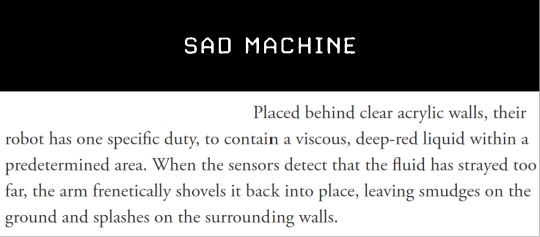

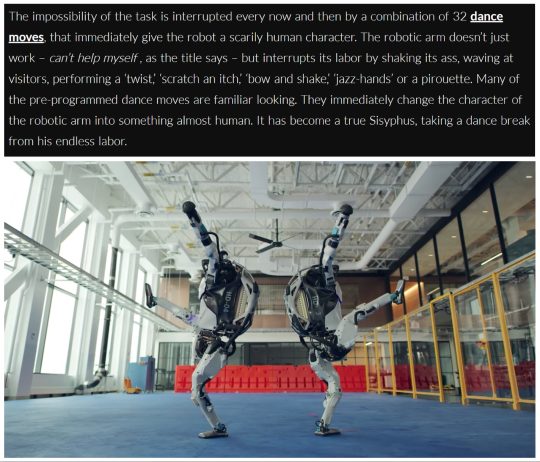
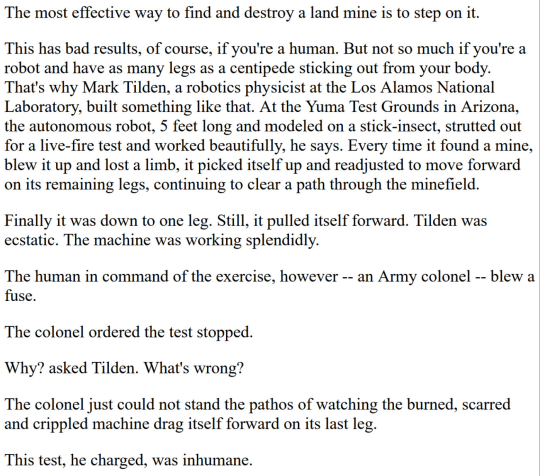
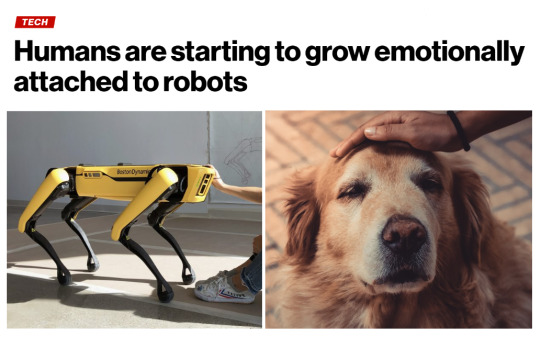
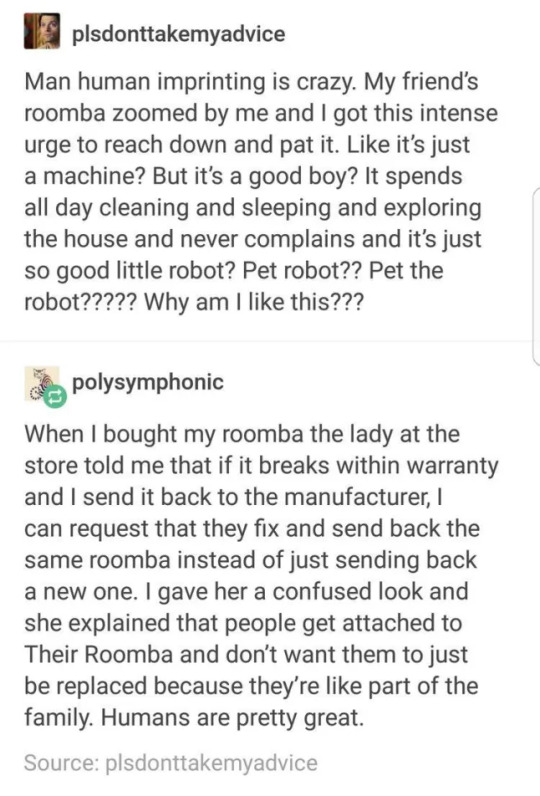


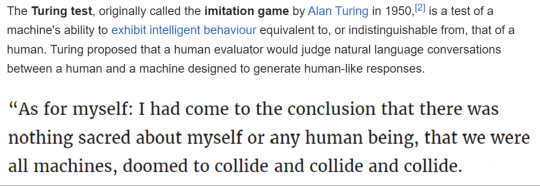
machines are human, too.
porter robinson, sad machine || sun yuan and peng yu, can't help myself || boston dynamics || the washington post || new york post || boston dynamics || tumblr || phillip k dick, do androids dream of electric sheep? || plainsight || wikipedia, turing test || kurt vonnegut, breakfast of champions
#web weaving#my weavings#on life#on humanity#the human condition#on robots#robots#sad machine#porter robinson#sun yuan#peng yu#can't help myself#boston dynamics#phillip k dick#do androids dream of electric sheep#plainsight#turing test#alan turing#kurt vonnegut#breakfast of champions
343 notes
·
View notes
Video
youtube
Philip K. Dick - A Day In The Afterlife (complete)
BBC Arena Documentary about the author, Philip K. Dick, from 1994. Features Terry Gilliam, Fay Wheldon, Thomas M. Disch, Brian Aldiss, Paul Williams, Elvis Costello, and other friends and fans. Excerpts read by Greg Proops.
92 notes
·
View notes
Text
Reality is that which, when you stop believing in it, doesn't go away.
-Phillip K. Dick
#phillip k dick#quote#peace#calm#stillness#life#wisdom#inner peace#love#happiness#spiritual#reality#nondual
107 notes
·
View notes
Photo

"Total Recall" (1990) Directed by Paul Verhoeven (Action/Sci-Fi)
#totalrec#total recall#1990#Paul Verhoeven#sci-fi#arnold schwarzenegger#sharon stone#phillip k. dick#michael ironside#film#cinema#cinema title cards#gif#gifs
11 notes
·
View notes
Text

Excerpt from Lost: Life & Ethics in The Age of AI, Chapter 50
#phillip k. dick#ethics#philosophy#writers on tumblr#writerscommunity#writlbr#quote#quotes#love#sociology#psychology#morals#ideology#hope#pain#reconciliation
2 notes
·
View notes
Text




2025 moodboard. All photos taken by me in Scotland.
15 notes
·
View notes
Text
How successful would Rick Deckard…

Would you like to submit a character? Click this link if you do!
#could they be a pro wrestler#rick deckard#harrison ford#blade runner#phillip k dick#philip k. dick#philip k dick#do androids dream of electric sheep#blade runner 2049#blade runner au#blade runner black lotus#james purefoy#1980s movies#1980s film#1980s cinema#science fiction#ridley scott#denis villeneuve#tumblr polls#polls#character polls#fandom polls#wrestling#wrestling polls#poll time#hyper specific poll#poll game#wwe#professional wrestling#pro wrestling
14 notes
·
View notes
Text

Hayakawa edition.
44 notes
·
View notes
Text





“Nothing the God of biomechanics wouldn't let you into heaven for.”
#meet your maker#blade runner#roy batty#eldon tyrell#kiss of life#kiss of death#phillip k dick#ridley scott#more human than human
12 notes
·
View notes
